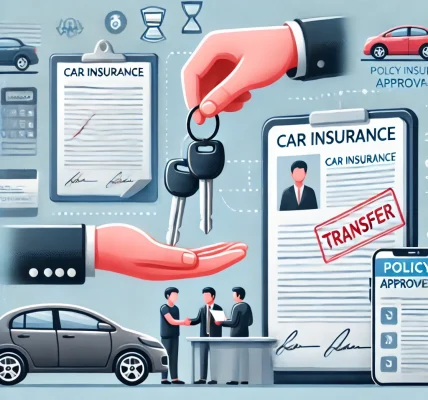Weather plays a significant role in road safety and can have a direct impact on car insurance claims and premiums. From heavy rains and snowstorms to hurricanes and wildfires, extreme weather conditions increase the likelihood of accidents, vehicle damage, and insurance claims. As a result, insurers take these factors into account when determining car insurance rates.
In this article, we will explore how different weather conditions affect car insurance claims and premiums, what policyholders can do to mitigate risks, and how to ensure comprehensive coverage in the face of unpredictable weather events.
How Weather Conditions Impact Car Insurance Claims
1. Rain and Flooding
Heavy rain and flooding can lead to hazardous driving conditions, increasing the chances of hydroplaning, reduced visibility, and accidents. Water damage to vehicles is another significant concern, as floodwaters can severely damage a car’s engine and electrical systems.
Insurance Implications:
- Claims related to accidents caused by wet roads and hydroplaning typically fall under collision coverage.
- Water damage from flooding may only be covered if the policyholder has comprehensive coverage.
- If a vehicle is totaled due to flood damage, insurers may pay out the actual cash value (ACV) of the vehicle.
2. Snow and Ice
Winter weather conditions such as snow, ice, and freezing rain make roads slippery, leading to an increase in accidents, skidding, and multi-car pileups.
Insurance Implications:
- Accidents caused by icy roads are generally covered under collision insurance.
- Damage caused by falling ice, such as from trees or buildings, is covered under comprehensive insurance.
- Some insurers charge higher premiums in regions with frequent snow and ice-related claims.
3. Hailstorms
Hail can cause extensive damage to a vehicle’s exterior, shattering windows, denting the body, and even rendering a car undrivable.
Insurance Implications:
- Hail damage is covered under comprehensive insurance.
- If the repair costs exceed the value of the car, insurers may declare it a total loss.
- Some policyholders may face increased premiums in areas prone to frequent hailstorms.
4. Hurricanes and Strong Winds
Hurricanes, tornadoes, and strong winds can cause severe damage to vehicles by uprooting trees, sending debris flying, and leading to flooding.
Insurance Implications:
- Damage caused by hurricanes and high winds is covered under comprehensive insurance.
- If the damage results in a total loss, the insurer will provide compensation based on the car’s ACV.
- Drivers in hurricane-prone regions may experience higher insurance premiums due to increased risk.
5. Extreme Heat and Wildfires
Prolonged exposure to extreme heat can cause damage to a car’s tires, battery, and engine. Wildfires, on the other hand, pose a significant threat, leading to total vehicle destruction in some cases.
Insurance Implications:
- Damage caused by wildfires and extreme heat is covered under comprehensive insurance.
- Policyholders living in wildfire-prone regions may experience rising premiums due to an increase in claims.
- Insurers may introduce special clauses or higher deductibles for fire-related damages.
6. Fog and Reduced Visibility
Foggy conditions significantly reduce visibility, increasing the risk of accidents, particularly in areas with heavy traffic or winding roads.
Insurance Implications:
- Accidents due to fog are covered under collision insurance.
- Insurers may increase premiums in regions with high instances of fog-related claims.
How Weather Conditions Influence Car Insurance Premiums
Insurance companies assess risk based on several factors, including weather conditions in a particular geographic region. Here’s how weather impacts insurance premiums:
1. Geographic Risk Assessment
- Areas prone to hurricanes, tornadoes, or heavy snowfall often have higher insurance premiums due to increased claims.
- Urban areas with poor drainage systems may see higher flood-related claims, affecting premiums.
2. Frequency of Claims
- Insurers adjust premiums based on the number of weather-related claims in an area.
- If a region experiences frequent hailstorms or floods, policyholders may see a gradual increase in their rates.
3. Availability of Comprehensive Coverage
- Comprehensive insurance covers weather-related damages but comes at an additional cost.
- Policyholders in high-risk areas are encouraged to opt for this coverage to ensure full protection.
4. Use of Weather-Related Endorsements
- Some insurers offer specialized add-ons, such as flood protection or hail damage coverage.
- These endorsements may increase premiums but provide peace of mind in extreme weather conditions.
How to Minimize Weather-Related Insurance Costs
While weather conditions are beyond our control, there are proactive steps policyholders can take to reduce insurance costs and minimize claim risks:
1. Choose the Right Coverage
- Ensure your policy includes comprehensive coverage to protect against natural disasters.
- Consider adding gap insurance if your car loan exceeds the car’s actual value.
2. Park in a Safe Location
- Use covered parking or garages to protect your vehicle from hail, storms, and extreme heat.
- Avoid parking under trees or power lines during storms.
3. Install Weather-Resistant Features
- Invest in hail-resistant car covers.
- Use all-weather tires for better traction in snow and rain.
- Apply weatherproof coatings to protect the car’s exterior.
4. Drive Cautiously in Adverse Conditions
- Reduce speed and maintain a safe following distance in rain, snow, or fog.
- Use headlights and fog lights as needed to improve visibility.
- Avoid flooded roads to prevent engine damage.
5. Monitor Weather Alerts and Plan Accordingly
- Stay informed about upcoming weather conditions before heading out.
- Postpone unnecessary trips during extreme weather events.
6. Shop Around for the Best Insurance Rates
- Compare insurance quotes from multiple providers.
- Look for insurers that offer discounts for safety-conscious drivers.
- Ask about bundling options to reduce overall insurance costs.
Final Thoughts
Weather conditions play a crucial role in determining car insurance claims and premiums. Policyholders in regions with extreme weather events should ensure they have the right coverage to protect their vehicles from potential damage. While insurance costs may be higher in high-risk areas, proactive steps like parking in safe locations, investing in weather-resistant features, and driving cautiously can help mitigate risks.



